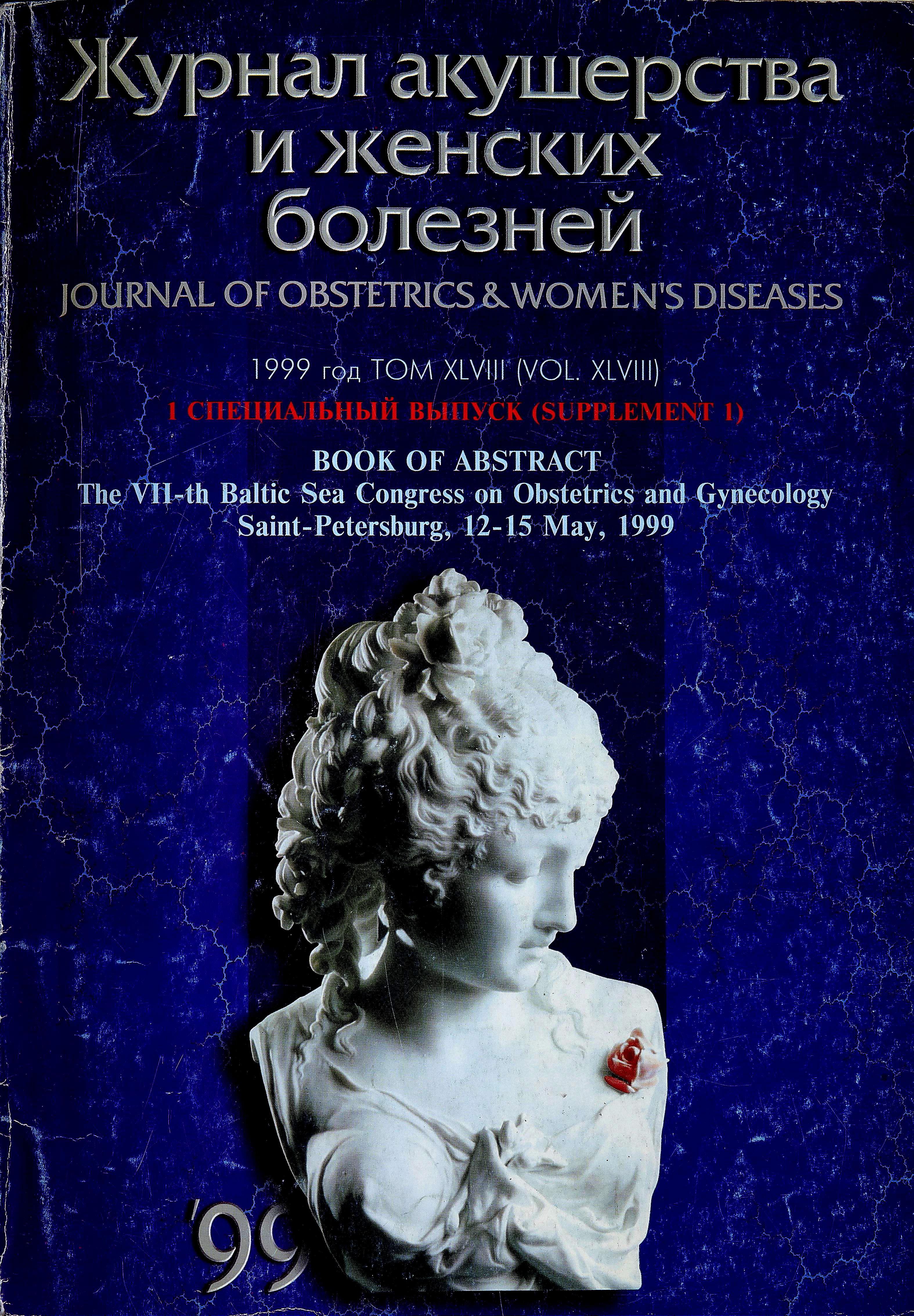Humerospinous distance is not of use to predict shoulder dystocia
- Авторы: Geirsson R.T.1, Klaij F.A.1, Hreinsdottir M.1, Nielsen H.1, Haraldsdottir K.R.1
-
Учреждения:
- National University Hospital
- Выпуск: Том 48, № 5S (1999)
- Страницы: 67-67
- Раздел: Статьи
- Статья получена: 16.02.2022
- Статья одобрена: 16.02.2022
- Статья опубликована: 15.12.1999
- URL: https://journals.eco-vector.com/jowd/article/view/100915
- DOI: https://doi.org/10.17816/JOWD100915
- ID: 100915
Цитировать
Полный текст
Аннотация
Objective: To evaluate if the humerospinous distance as an indicator of shoulder width could be used to predict shoulder dystocia at term.
Полный текст
Objective: To evaluate if the humerospinous distance as an indicator of shoulder width could be used to predict shoulder dystocia at term.
Methods: A prospective cross-sectional study of a stratified reference group of 32 healthy women with singleton pregnancies at 39, 40, 41 and 42 weeks by ultrasound was done. Measurement of humerospinous distance was from the cervicothoracic vertebral level at the convergence of the spinous process to the medial border of the humeral head. A group of 40 women with risk factors for developing shoulder dystocia in labor were tested against the reference range.
Results: The references group was similar to the general population at term, while the test group women were significantly heavier, had larger babies in the previous and present pregnancies and larger symphysis - fundal measurements, but the mean humerospinous distance was identical in both groups with a similar standard deviation. The only case of shoulder dystocia occurred in the reference group. In 13 other cases the same or greater humerospinous distance was measured. The correlation between birthweight and humerospinous distance was low (r2=0.0049) and the correlation with maternal body mass was even lower (r2=0.005). The measurement was easy to carry cut, but movement of the fetal arm across the fetal chest (pro- and retraction, circumduction) could considerably influence measurement.
Conclusion: The humerospinous distance can be measured at term, but has inherent potential for error due to shoulder girdle movement and the measurement has no predictive value for shoulder dystocia.
Об авторах
R. T. Geirsson
National University Hospital
Автор, ответственный за переписку.
Email: info@eco-vector.com
Исландия, Reykjavik
F. A.V. Klaij
National University Hospital
Email: info@eco-vector.com
Исландия, Reykjavik
M. Hreinsdottir
National University Hospital
Email: info@eco-vector.com
Исландия, Reykjavik
H. Nielsen
National University Hospital
Email: info@eco-vector.com
Исландия, Reykjavik
K. R. Haraldsdottir
National University Hospital
Email: info@eco-vector.com
Исландия, Reykjavik
Список литературы
Дополнительные файлы







